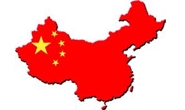International Steel Mills

Chinese Steel Restricted by Power Shortages, Environmental Regs
Written by Tim Triplett
August 9, 2018
Editor’s note: The following report on China was contributed by the CRU Group.
A power shortage is causing steel production reduction in China’s Hebei province, while in Shandong provincial authorities have ordered a new round of capacity cutbacks across the steel, aluminum and coal sectors.
To ensure power for residential use, leading electricity supplier, the State Grid Corporation of China, is to tell major consumers such as steel mills to restrict activities during peak hours. The move follows record high power grid loading in southern areas of Hebei in late July due to a heatwave. Under the restrictions, industrial plants can only work from 11 p.m. to 7 a.m.
The area covered includes major steel cities Handan and Cangzhou, while in Wu’an around 30 percent of the more than 5 metric ton per year capacity at Yuhua Steel has been affected, said manager Gao Jingguang, as quoted by Reuters.
Power restrictions are also reportedly scheduled this week for the country’s largest steelmaking city, Tangshan in Hebei, north China.
Meanwhile, the environmental protection bureau in Shandong province, east China, has issued new targets to cut steel and coal production capacity, eliminate outdated aluminum smelters, and change to cleaner energy as part of the central government’s anti-pollution efforts.
The three-year action plan calls for pig iron capacity to be reduced by 600,000 tons and crude steel by 3.55 million tons by the end of this year, according to media reports.
Other goals include:
- a switch to rail or water transport from road for iron ore, coke, coal and other bulk commodities before mid-2020,
- specifically, accelerating plans for aluminum smelting companies, notably Shandong Weiqiao (part of Hongqiao) and the Xinfa Group, to exclusively use rail for freight,
- coal extraction capacity being cut by 10.3 percent to 156 million tons, and
- providing more than 70 percent of heating in the winter months to rural areas being derived from clean energy sources by 2020.

Tim Triplett
Read more from Tim TriplettLatest in International Steel Mills

Global steel mill output steady through May
Global raw steel production rose 2% from April to May, slightly above average production levels seen in recent months, according to data recently released by the World Steel Association (worldsteel).

Trump says US government to control 51% share in USS
President Trump says the US government will hold a 51% stake in U.S. Steel after the Nippon deal.

USS, Nippon Steel quiet as litigation deadline approaches
There has been little word from U.S. Steel, Nippon Steel, or the White House since President Trump endorsed the companies’ “partnership” on social media and celebrated it at the May 30 rally outside Pittsburgh.

Ternium’s Vedoya named AIST’s Steelmaker of the Year
Maximo Vedoya was awarded in recognition of Ternium’s expansion project in Pesquería, Mexico, and Ternium’s efforts to decarbonize steelmaking.

CRU: Baosteel hints at output cuts in China
Baosteel exec comments on market rumors of 50 million tons of output being cut this year, less than 0.5% of the 1 billion tons-plus China has produced annually in recent years.
